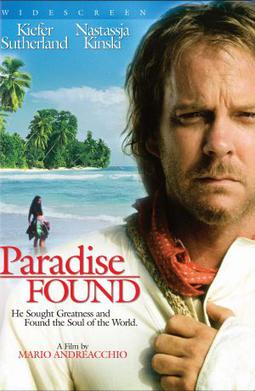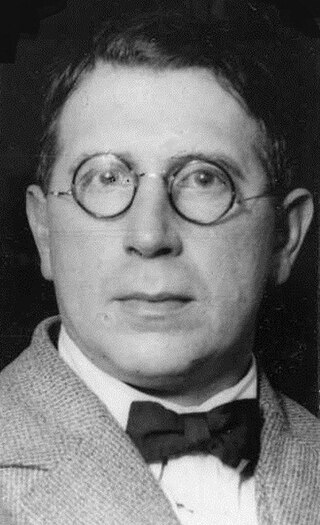
The Musée d'Orsay is a museum in Paris, France, on the Left Bank of the Seine. It is housed in the former Gare d'Orsay, a Beaux-Arts railway station built between 1898 and 1900. The museum holds mainly French art dating from 1848 to 1914, including paintings, sculptures, furniture, and photography. It houses the largest collection of Impressionist and post-Impressionist masterpieces in the world, by painters including Berthe Morisot, Claude Monet, Édouard Manet, Degas, Renoir, Cézanne, Seurat, Sisley, Gauguin, and van Gogh. Many of these works were held at the Galerie nationale du Jeu de Paume prior to the museum's opening in 1986. It is one of the largest art museums in Europe.

Eugène Henri Paul Gauguin was a French painter, sculptor, printmaker, ceramist, and writer, whose work has been primarily associated with the Post-Impressionist and Symbolist movements. He was also an influential practitioner of wood engraving and woodcuts as art forms. While only moderately successful during his lifetime, Gauguin has since been recognized for his experimental use of color and Synthetist style that were distinct from Impressionism.

Where Do We Come From? What Are We? Where Are We Going? is a 1897–98 painting by French artist Paul Gauguin. The painting was created in Tahiti, and is in the Museum of Fine Arts in Boston, Massachusetts. Viewed as a masterpiece by Gauguin, the painting is considered "a philosophical work comparable to the themes of the Gospels".

The Paul Gauguin Cultural Center was finished in 2003, to coincide with the 100th anniversary of the death of Paul Gauguin, in Atuona, on Hiva ʻOa, in the Marquesas Islands.
The year 1888 in art involved some significant events.

Pont-Aven School encompasses works of art influenced by the Breton town of Pont-Aven and its surroundings. Originally the term applied to works created in the artists' colony at Pont-Aven, which started to emerge in the 1850s and lasted until the beginning of the 20th century. Many of the artists were inspired by the works of Paul Gauguin, who spent extended periods in the area in the late 1880s and early 1890s. Their work is frequently characterised by the bold use of pure colour and their Symbolist choice of subject matter.
Elin Alberte Leonora Winding, commonly known as Alberte, is a Danish singer and actress, and the daughter of Thomas Winding and Lulu Gauguin. She grew up in Copenhagen and on the island of Ærø. She worked together with her brothers Kasper Winding and Aske Bentzon on their father's programs for Denmark Radio.

Ordrupgaard is a state-owned art museum situated near Jægersborg Dyrehave, north of Copenhagen, Denmark. The museum houses one of Northern Europe's most important collections of Danish and French art from the 19th and beginning of the 20th century.

MS Paul Gauguin is a cruise ship that was completed in 1997. It primarily operates in the South Pacific. Paul Gauguin Cruises is headquartered in Bellevue, Washington.

Paradise Found is a 2003 biographical film based on the life of Post-Impressionist painter Paul Gauguin. Starring Kiefer Sutherland as the title character, alongside Nastassja Kinski and Alun Armstrong.

Saint-Étienne-le-Molard is a commune in the Loire department in central France.
Jean René Gauguin was a French-Danish sculptor. He won a bronze medal for Denmark in the art competitions at the 1924 Summer Olympics for his Boxer.

Oviri is an 1894 ceramic sculpture by the French artist Paul Gauguin. In Tahitian mythology, Oviri was the goddess of mourning and is shown with long pale hair and wild eyes, smothering a wolf with her feet while clutching a cub in her arms. Art historians have presented multiple interpretations—usually that Gauguin intended it as an epithet to reinforce his self-image as a "civilised savage". Tahitian goddesses of her era had passed from folk memory by 1894, yet Gauguin romanticises the island's past as he reaches towards more ancient sources, including an Assyrian relief of a "master of animals" type, and Majapahit mummies. Other possible influences include preserved skulls from the Marquesas Islands, figures found at Borobudur, and a 9th-century Mahayana Buddhist temple in central Java.
Ponant is a French cruise ship operator. It was founded in April 1988 by Philippe Videau, Jean-Emmanuel Sauvé, and other officers of the French Merchant Navy and launched the first French cruise ship. The company operates eleven ships, all of which operate under the French flag.

Pola Gauguin was a Danish-Norwegian painter, art critic and biographer.
The Groupe scolaire Paul Gauguin or the Lycée Français Paul Gauguin was a French international school in Agadir, Morocco.

Arearea is an 1892 work by French painter Paul Gauguin. It was one of the works Gauguin exhibited at his 1893 Durand-Ruel exhibition in Paris. It was bequeathed to the French state in 1961, and was in the collection of the Louvre. From 1986, the painting has been in the collection of the Musée d'Orsay. The prominence in his paintings of collarless free range dogs has been the subject of much speculation as to their symbolic or metaphorical meaning.
The 4th Robert Awards ceremony was held in 1987 in Copenhagen, Denmark. Organized by the Danish Film Academy, the awards honoured the best in Danish and foreign film of 1986.

Self-Portrait with Halo and Snake, also known as Self-Portrait, is an 1889 oil-on-wood painting by French artist Paul Gauguin, which represents his late Brittany period in the fishing village of Le Pouldu in northwestern France. No longer comfortable with Pont-Aven, Gauguin moved on to Le Pouldu with his friend and student Meijer de Haan and a small group of artists. He stayed for several months in the autumn of 1889 and the summer of 1890, where the group spent their time decorating the interior of Marie Henry's inn with every major type of art work. Gauguin painted his Self-Portrait in the dining room with its companion piece, Portrait of Jacob Meyer de Haan (1889).

Fields by the Sea is an 1889 oil on canvas painting by Paul Gauguin. It is also called Landscape from Bretagne. The painting is exhibited at the Nationalmuseum in Stockholm.














